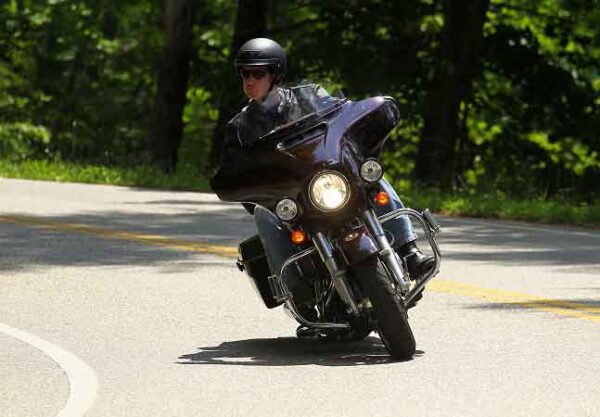
Over the years, Maine state motorcycle laws have gone through numerous revisions. Though any resident can obtain a permit or license to operate their motorcycle on Maine roadways, the license holder must stay up-to-date on current state laws pertaining to motorcycles and their operation.
The majority of Maine state motorcycle laws focus on ability and safety. In large part because operating a motorcycle is a far more involved task than operating a car or pickup truck. Motorcyclists must combine a sense of balance with a keen sense of awareness of the road, its conditions, and their position amidst traffic and its flow. Due to their smaller size and narrow profile, motorcyclists are far more vulnerable on the road because they are far less visible than cars and larger vehicles.
Riders need to be constantly vigilant of traffic around them. They must also be aware of pedestrians and, especially in Maine, the abundance of wild or domestic animals that can dart out or lumber across roadways at any time of day. Some dogs chase motorcycles. In Maine, deer, moose, turkeys, and cattle will enter crossroads in front of them.
Though a motorcycle can respond more quickly than a car to operator input—braking, riders are far more vulnerable to the wind, weather, and other elements. Combined with Maine’s notoriously challenging road surfaces, riders should learn to protect themselves and ensure their safety through study, training, and practice. Another sure way is for motorcyclists to know the laws that apply to them.
Here’s a handful to review and remember before hitting the roadways:
Motorcycle Licensing
Per Maine law, you must successfully complete a hands-on rider education program to earn your motorcycle permit and pursue your license. Referred to as the Basic RidersCourse (BRC), it is a motorcycle driver education program that consists of classroom and hands-on instruction directly related to the actual operation of motorcycles. Along with developing skills, the program is designed to instill safety and awareness when operating a motorcycle.
Age Requirements
An applicant must be at least 16 years old to obtain a motorcycle permit or license. Those applicants under 18 years of age must complete a basic driver education course and hold at least a valid driver’s permit (the permit for a Class C license) before enrolling in a BRC. You do not need to take driver’s education for operating a car or pickup truck, i.e., the Class C license if you’re over 18 or already have a valid driver’s license.
Helmet Laws and Protective Gear
Helmet laws and protective gear requirements in Maine have changed considerably over the past 50-plus years, and it falls upon riders to stay current with them. Presently, Maine’s helmet requirements are mandatory for operators under 18, those operating with a learner’s motorcycle permit, or for those who have completed a driving test within the previous 12 months, and for operators of off-road motorcycles under 15. Helmets are required for passengers on a motorcycle or in an attached sidecar under 15 years old. Eye and face protection and other protective riding gear are not mandatory but strongly encouraged.
Important Rules of the Road to Remember
- Motorcycles must have permanent seating for operators and their passengers, with no more than one person occupying each seat.
- Passengers in an attached sidecar may not exceed the number of permanent seats there, to a maximum of 2 persons.
- Headlights must be on at all times when on a public way.
- Handlebar handgrips cannot be higher than the motorcycle operator’s shoulders.
- As of 2019, more than 2 motorcycles may not be operated abreast within the same lane.
- When passing another motor vehicle, a motorcycle operator may not overtake or pass in the same lane occupied by the overtaken vehicle.
- A person may not operate a motorcycle between lanes of traffic or between adjacent lines or rows of vehicles.
- Finally, wheelies—the intentional or knowingly raising of the front wheel of a motorcycle off a surface when operating it—are illegal on a public way or any place where public traffic may reasonably be anticipated.

